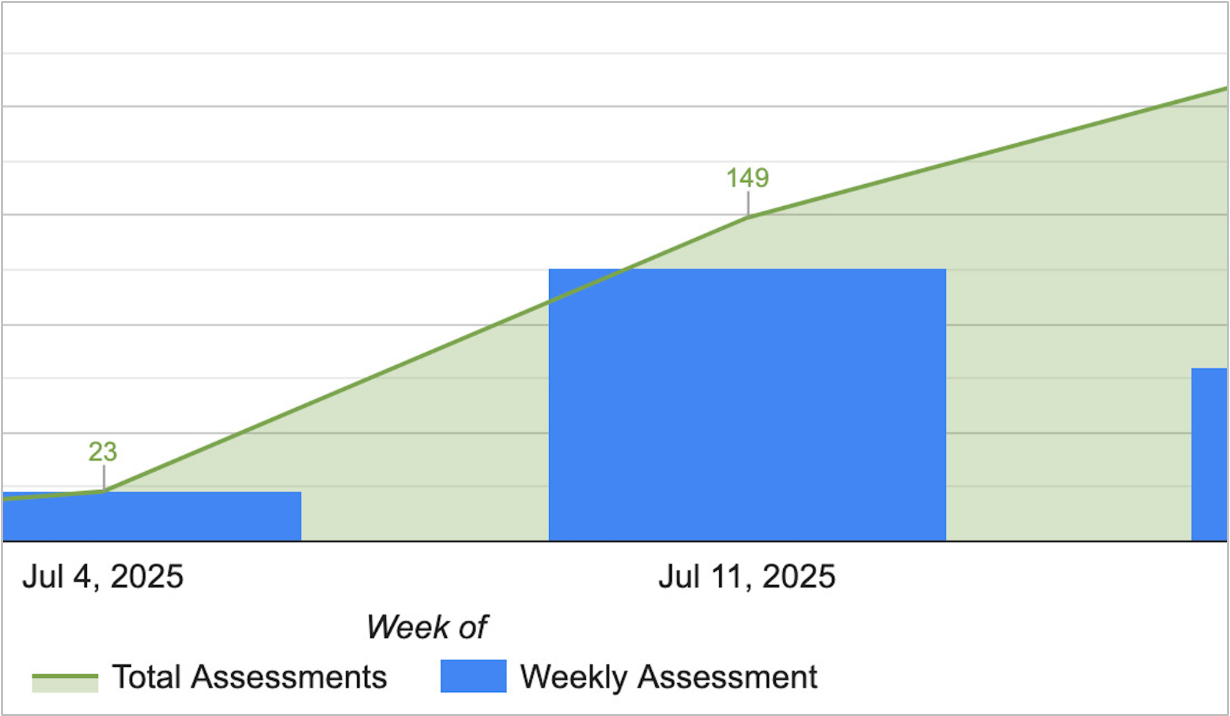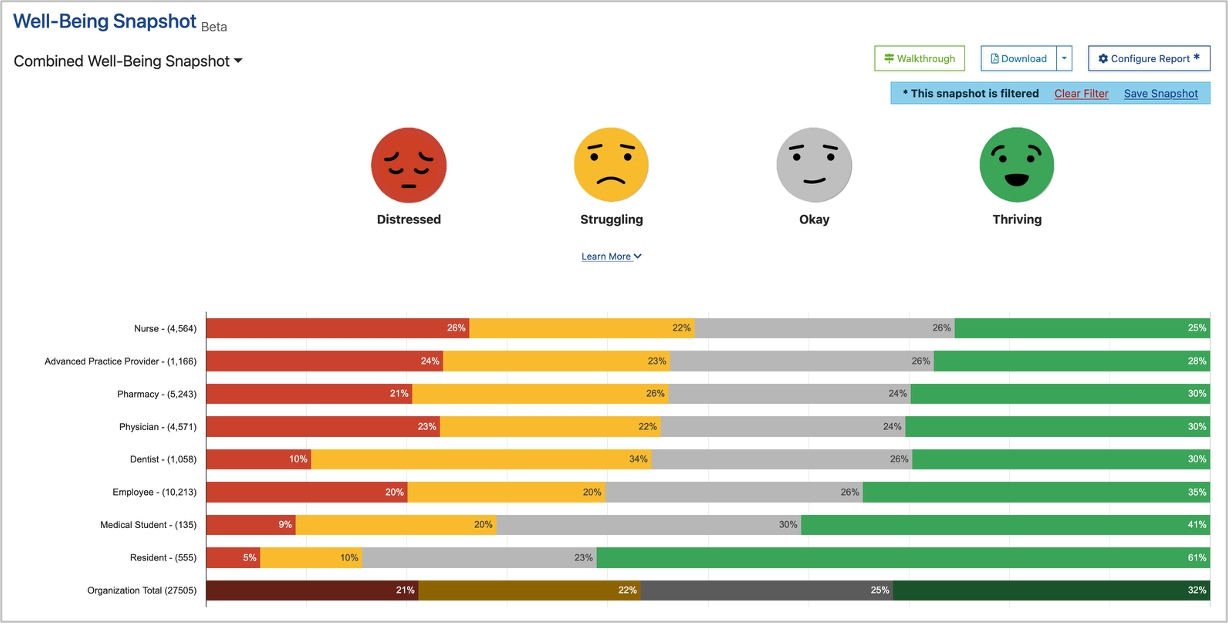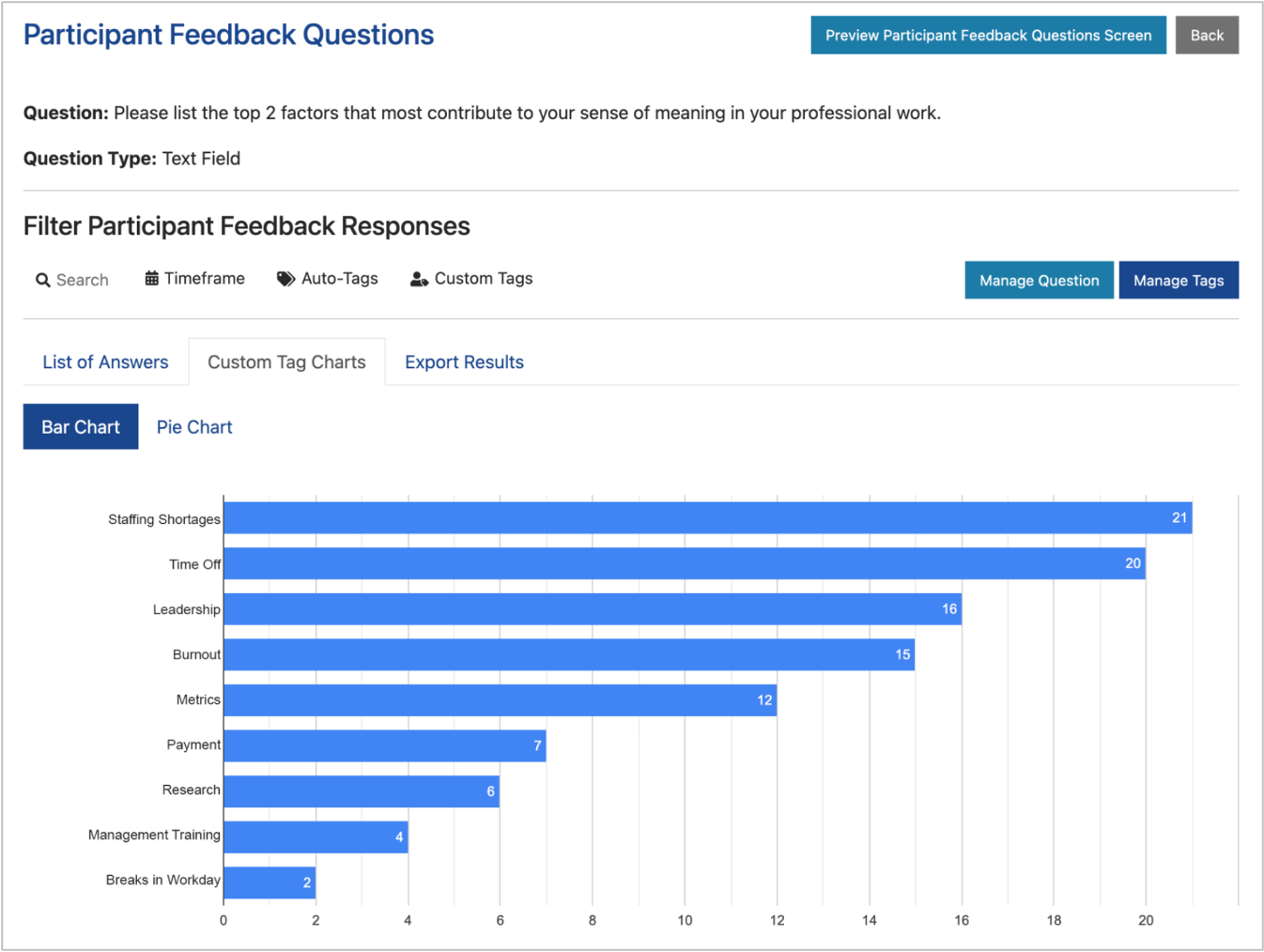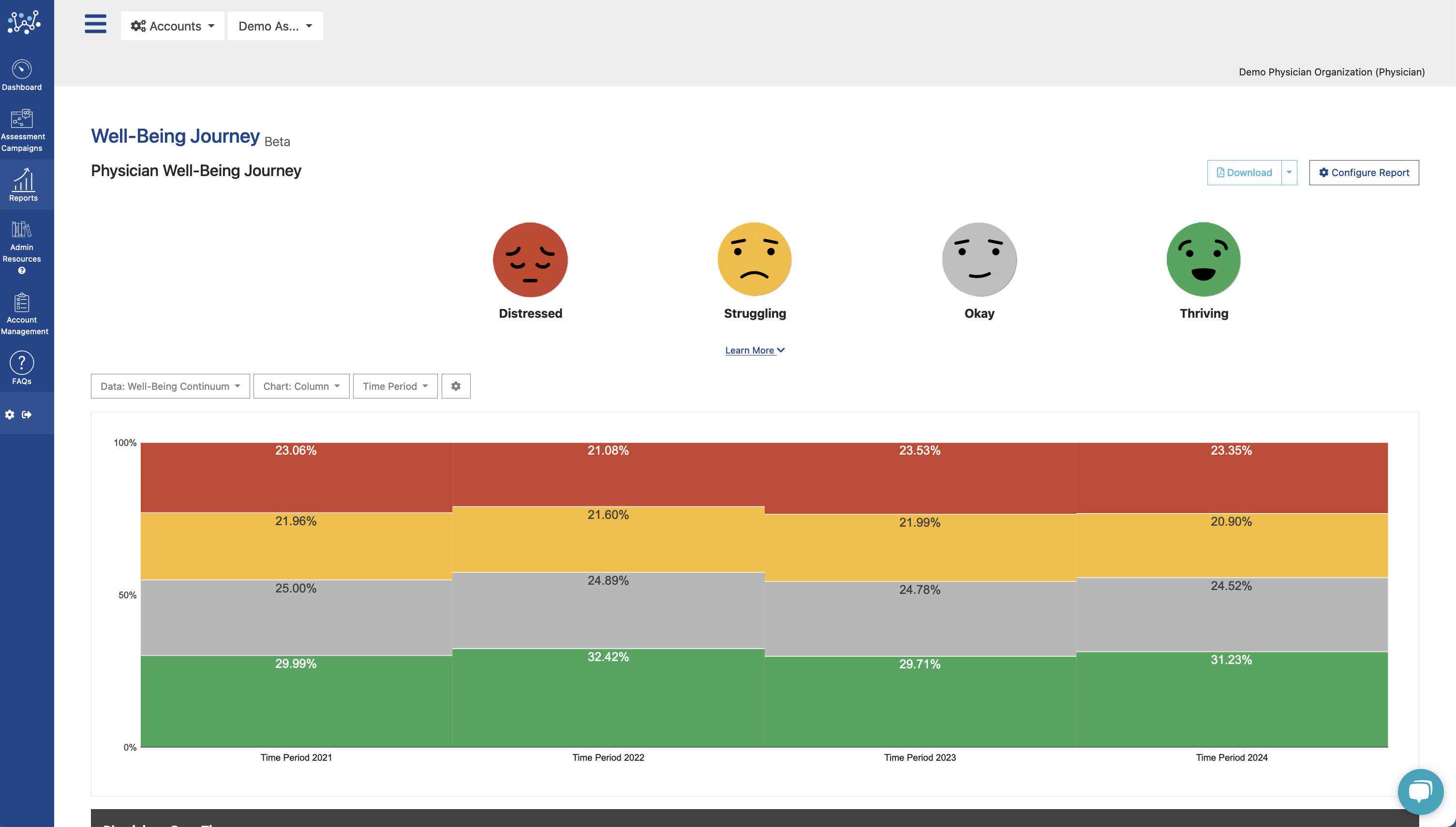The encroaching crackle of clinician burnout is a clear danger to patients under your organization’s care. It can erode safety, kickstart staff shortages, inspire leadership turnover, and even sour generational attitudes. Thankfully, clinician burnout has never been easier to predict, assess, and address.
This article provides a snapshot of burnout’s consequences and concludes with a discussion of ongoing efforts to combat the problem.
Clinician burnout is dangerous for patient safety
First and foremost, burnout poses a risk to patients. A 2021 study published by the International Journal of Environmental Research and Public Health found clear links between mortality rates and burnout. According to the authors:
“We observed that patients in hospitals with higher levels of nurse burnout had higher odds of mortality and failure to rescue, as well as longer length of stay.” (1)
Their work is an updated look at a phenomenon that has been clear for years. An article published by Frontiers in Psychology in 2014 also concluded that patient safety and clinician burnout are linked, saying:
“Objectively, units with high emotional exhaustion had higher standardized mortality ratios. In summary, our results indicate that clinician psychological health and patient safety could be managed simultaneously.” (2)
[RELATED: Economic Cost of Burnout Guide – The Business Case For Investing In Well-Being]
Clinician burnout can go “viral”
From providing worse care in nursing homes (3) to leading the next generation of medical professionals with a burnout-addled attitude, the impact of clinician burnout is profession-wide, and contagious, in a sense.
A 2023 article published by Permanente Journal discusses the toll of burnout on academic physicians and points out that these faculty have “poor confidence in their teaching skills” and “fewer life-long learning habits.” (4)
The authors further state that, though limited in their ability to prove causality, “ it is conceptually likely that burnout in this subgroup of physicians has a cascading negative effect on the training provided to future generations of physicians, including their quality of care, professional conduct, and attitudes toward their own health.”
According to the article, physicians with leadership roles in academic settings have roughly equal rates of burnout (50%) as the people they lead. Residency program leaders and anesthesiology department chairs were found to have less satisfaction in their job in the years following their appointment, and an alarming number consider stepping down within two years from when they were surveyed.
“This is discouraging, as residents and faculty look up to their leaders for support and moral stewardship,” write the authors.
[CASE STUDY: Creating a New Wellness Culture in a 21-State Health System]
Clinician burnout reduces access to providers and exacerbates shortages
Whether it happens when they are a resident or a department chair, when clinicians burnout, they quit. And when clinicians quit, patients go untreated on waitlists, adding stress to a now-smaller-by-one workforce.
“Since the COVID-19 pandemic, nurse burnout has increased, and some scholars have reported that 30% to 40% of nurses intend to leave the nursing profession.” (5)
Even workers who intend to stay can find themselves moved to walking off the job temporarily; in 2022, Beckers Hospital Review reported a total of 18 strikes across the United States.
Clinician burnout is not inevitable
The ill effects of clinician burnout on patients across the United States prompted action at the highest reaches of the federal government. In 2021, the Dr. Lorna Breen Health Care Provider Protection Act was passed into law. The act is an attempt to incentivize organizations that promote wellness among employees.
This is not pie-in-the-sky thinking. The authors of the previously cited 2021 study hypothesized that the work environment could be leveraged to minimize the effect of burnout, and this was bolstered by the results of the study.
When work environment ratings changed from poor to mixed, or from mixed to good, authors found a 14% drop in odds of 30-day in-hospital mortality, a 12% drop in odds of failure to rescue, and a 4% drop in overall length of stay. (6)
As some of the previously cited studies showed, patient care improves as work environments change.
[RELATED: Combatting Clinician Suicide – Reducing the likelihood of suicidal ideation]
Where to go next?
A 2019 article published in the Journal of the American Geriatrics Society advocates for a root-of-the-problem-first, systemic approach. Find inefficiencies, involve direct care providers with administrators, and set up formal processes to respond to employee concerns.
“Finally, offering career ladders, preceptor programs for new hires, leadership training, and continuing education could improve two areas of dissatisfaction among RNs in our study: opportunities for advancement and professional status.” (7)
But the first step in protecting patients against burnout is being able to address it. As the issue grows more visible, tools are being developed by vanguard institutions such as the Well-Being Index invented by Mayo Clinic to help leaders accurately predict when and who burnout will strike.
Citations:
1. Schlak, A. E., Aiken, L. H., Chittams, J., Poghosyan, L., & McHugh, M. (2021). Leveraging the Work Environment to Minimize the Negative Impact of Nurse Burnout on Patient Outcomes. International journal of environmental research and public health, 18(2), 610. https://doi.org/10.3390/ijerph18020610
2. Welp, A., Meier, L. L., & Manser, T. (2015). Emotional exhaustion and workload predict clinician-rated and objective patient safety. Frontiers in Psychology, 5, 1573. https://doi.org/10.3389/fpsyg.2014.01573
3. White, E. M., Aiken, L. H., & McHugh, M. D. (2019). Registered Nurse Burnout, Job Dissatisfaction, and Missed Care in Nursing Homes. Journal of the American Geriatrics Society, 67(10), 2065–2071. https://doi.org/10.1111/jgs.16051
4. Banerjee, G., Mitchell, J. D., Brzezinski, M., DePorre, A., & Ballard, H. A. (2023). Burnout in Academic Physicians. The Permanente journal, 27(2), 142–149. https://doi.org/10.7812/TPP/23.032
5. Haugland, W. A., Crenshaw, J. T., & Gilder, R. E. (2023). Implementing a Resilience Bundle for Emergency Nurses: An Evidence-Based Practice Project. Journal of emergency nursing, 49(1), 40–49. https://doi.org/10.1016/j.jen.2022.08.009
6. Schlak, A. E., Aiken, L. H., Chittams, J., Poghosyan, L., & McHugh, M. (2021). Leveraging the Work Environment to Minimize the Negative Impact of Nurse Burnout on Patient Outcomes. International journal of environmental research and public health, 18(2), 610. https://doi.org/10.3390/ijerph18020610
7. White, E. M., Aiken, L. H., & McHugh, M. D. (2019). Registered Nurse Burnout, Job Dissatisfaction, and Missed Care in Nursing Homes. Journal of the American Geriatrics Society, 67(10), 2065–2071. https://doi.org/10.1111/jgs.16051







